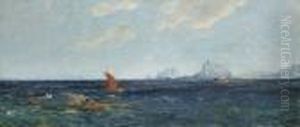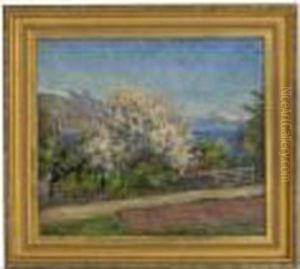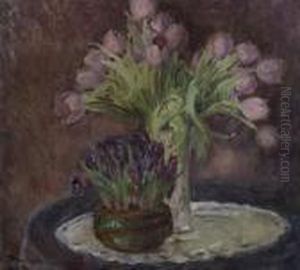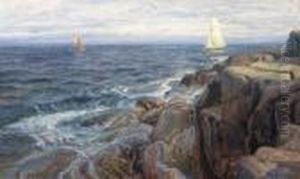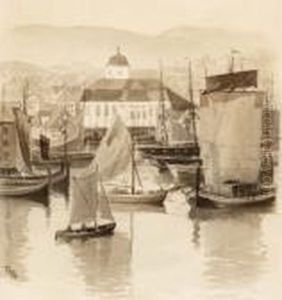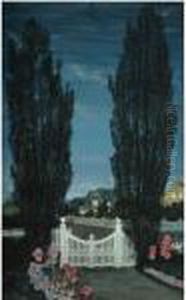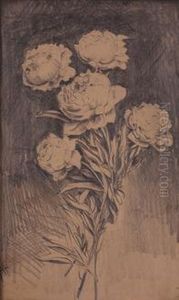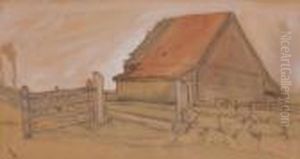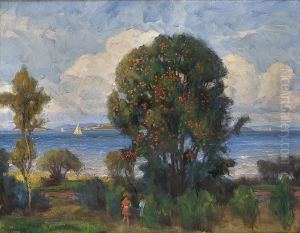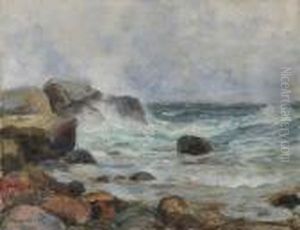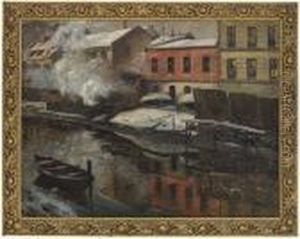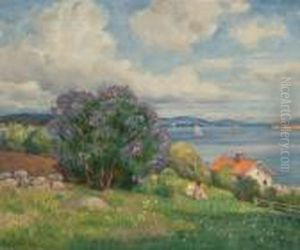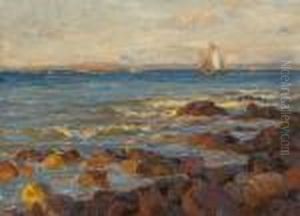Thorolf Holmboe Paintings
Thorolf Holmboe was a Norwegian painter, illustrator, and graphic artist. Born on November 29, 1866, in Vefsn, Norway, he became one of the prominent artists of his time in Norway. Holmboe's early life was spent in the northern parts of Norway, which greatly influenced his artistic style and subject matter. He is particularly known for his landscapes that capture the unique light and atmosphere of the Norwegian countryside.
Holmboe received his education at the Royal School of Drawing in Kristiania (now Oslo) and continued his studies abroad in Paris at the Académie Colarossi. His time in Paris exposed him to the influences of contemporary French art, which he blended with his own Nordic sensibilities.
Throughout his career, Thorolf Holmboe worked with various mediums, including oil painting, watercolor, and printmaking. He was also well-regarded for his work in decorative arts and book illustrations. Holmboe possessed a versatile style that ranged from realism to a more national romantic expression, which was popular in Norway at the time.
His works often depicted the vast and rugged landscapes of Norway, from the serene to the dramatic, and he had a particular affinity for portraying the changing seasons and the play of light across the natural scenery. Apart from landscapes, Holmboe also painted portraits and designed posters, which reflected the Art Nouveau style that was popular in Europe during the turn of the century.
Thorolf Holmboe's contribution to Norwegian art was significant in the late 19th and early 20th centuries. His illustrations and designs were widely recognized, and he contributed to the visual identity of Norwegian culture through his artistic endeavors. Holmboe’s art continues to be appreciated for its evocative portrayal of Norway’s landscapes and its artistic heritage.
Thorolf Holmboe passed away on March 5, 1935. His legacy is preserved in the collections of various art museums in Norway, including the National Gallery in Oslo, where many of his works are on display and continue to be studied and admired by art enthusiasts and historians alike.








